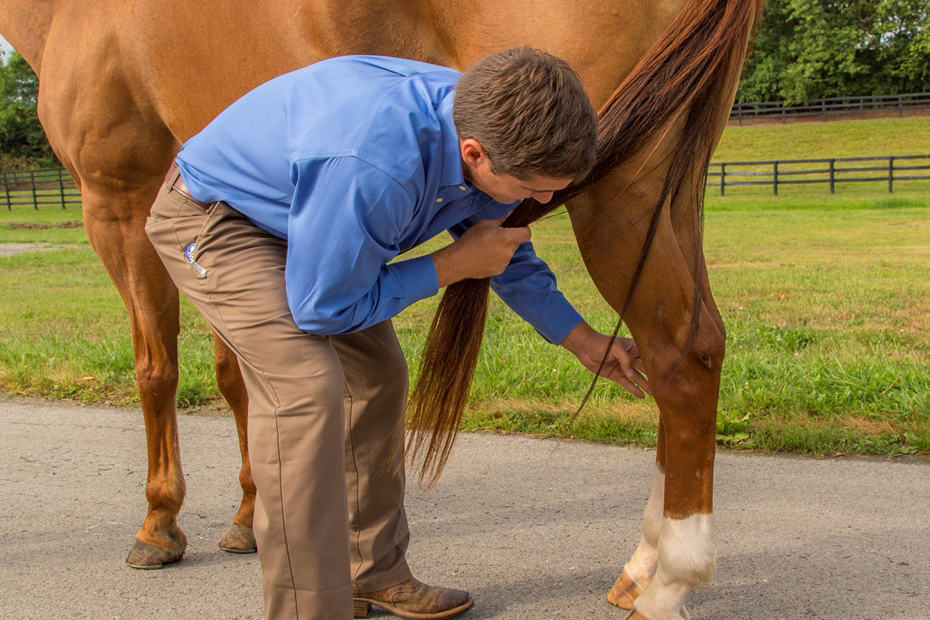How Vets can ‘Listen’ to Suspensory Injuries in Horses

There’s a new way for veterinarians to assess injuries to the upper (proximal) portion of horses’ hind-limb suspensory ligaments, which are notoriously difficult to assess. Veterinarians recently assessed acoustic myography, or AMG, and determined it could be useful for evaluating function of this ligament, which could mean more straightforward diagnoses, treatment recommendations, and monitoring of these injuries as they heal.
Study author Kent Allen, DVM, Cert. ISELP, of Virginia Equine Imaging, in The Plains, explained that imaging advancements have made it easier to visualize proximal suspensory ligament (PSL) structure but evaluating its function (especially during healing) has remained difficult. He recently worked with a research team—including Jillian Costello Chavers, DVM, who now owns and operates Magnolia Sport Horse Equine Lameness and Imaging, in Ocala, Florida, and colleagues from the University of Copenhagen, in Denmark—to test the modality’s potential for use in horses, and he described the team’s results at the 2018 American Association of Equine Practitioners Convention, held Dec. 1-5 in San Francisco, California.
The suspensory ligament—like all ligaments, which connect bone to bone—facilitates energy storage for movement. A small amount of muscle fiber in the structure provides tension. Veterinarians and researchers had long theorized that AMG—which measures how muscle and ligament fibers move—could help in lameness evaluation. They couldn’t test whether it had practical use, however, until scientists developed an appropriate tool. In 2013, Adrian Harrison, DPhil (Cantab), IVH, finally developed an effective AMG unit (marketed as the CURO), which essentially allows veterinarians to “listen” to the horse’s tissues. The research team evaluated this unit in their study
Create a free account with TheHorse.com to view this content.
TheHorse.com is home to thousands of free articles about horse health care. In order to access some of our exclusive free content, you must be signed into TheHorse.com.
Start your free account today!
Already have an account?
and continue reading.

Written by:
Erica Larson
Related Articles
Stay on top of the most recent Horse Health news with















